The Vibrant Traditional Markets of Africa: Exploring Marrakech to Maasai Mara
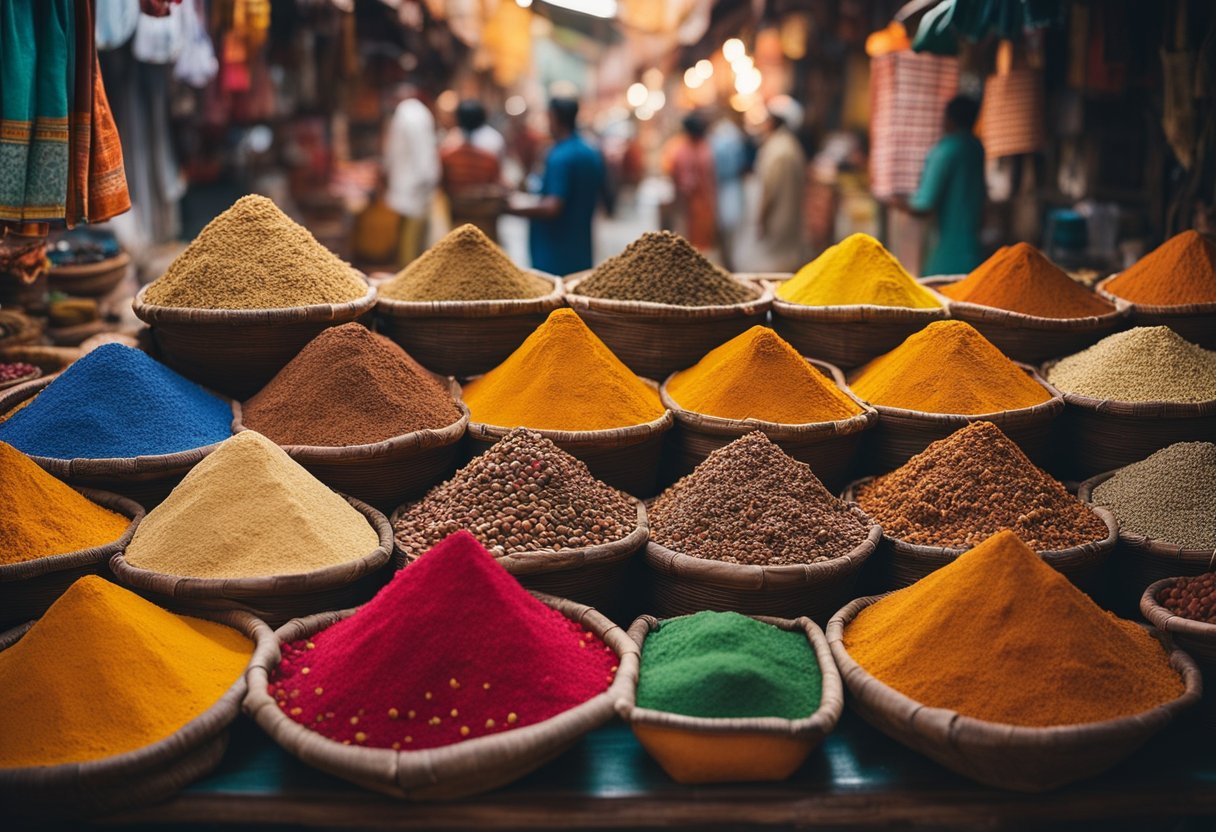
Updated On: April 17, 2024 by Maha Yassin
Africa’s bustling traditional markets are essential to its rich cultural tapestry, offering a glimpse into the continent’s soul. They range from the vibrant souks of Marrakech to the iconic Maasai Market in the shadow of the Maasai Mara. These markets are not just places of trade but are beating the hearts of communities, where the hum of bartering traders and the vivid strands of craftsmanship weave together the story of a people and their heritage.
As we explore the markets of Africa, we discover more than just the exchange of goods. The historical context in which these markets were established shows their pivotal role in developing economies and societies. From the winding alleys of Marrakech, redolent with spices and echoing with the call of hawkers, to the Maasai Mara, where the brilliance of beadwork and the warmth of welcomes provide a richer understanding of the nomadic cultures, these markets are key destinations for any traveller.
Historical Context of African Markets
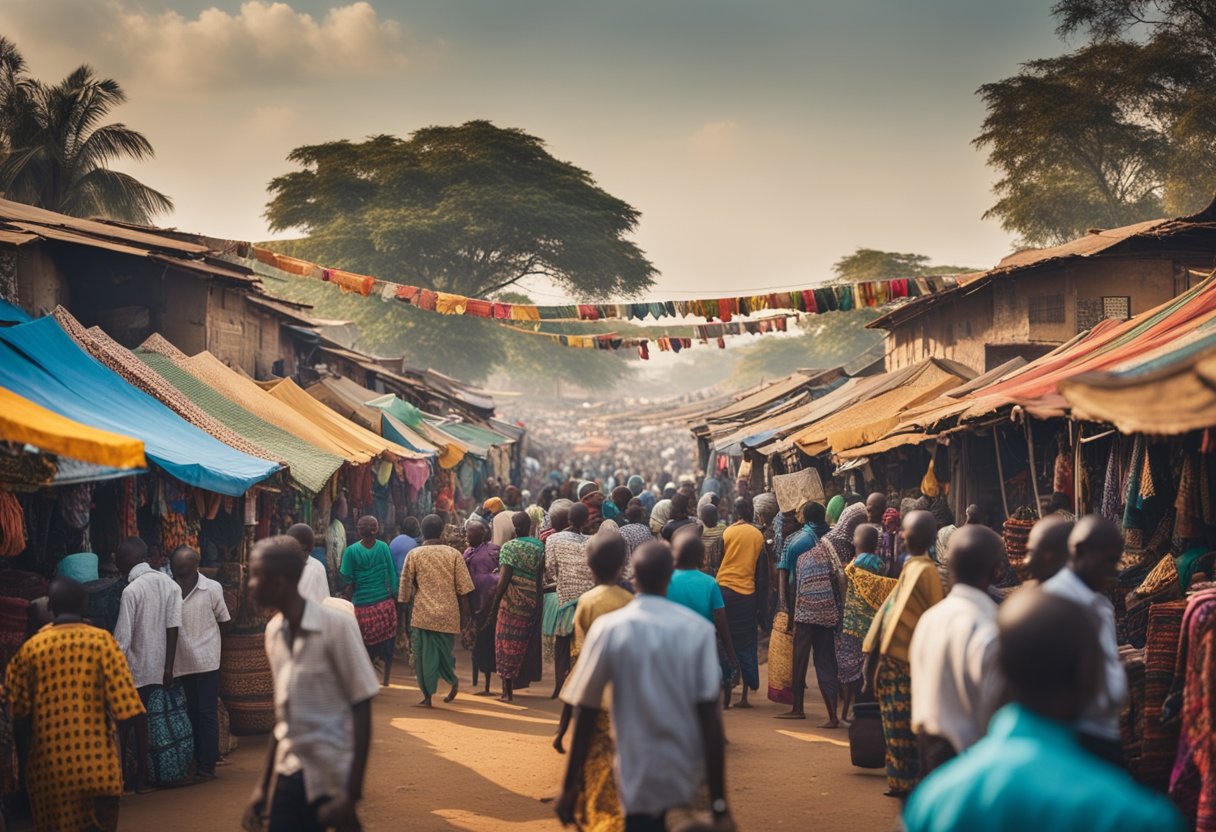
Exploring the tapestry of African markets unveils a rich historical and cultural panorama. We find vibrant trade centres deeply entwined with the traditional, cultural, and historical facets of African societies.
Evolution of Trade in Africa
Trade has been an essential activity across Africa for centuries, rooted in necessity and tradition. Ancient kingdoms like Mali and Ghana thrived on the wealth garnered from trade routes that crossed the Sahara, bringing gold, salt, and ivory to distant lands. These kingdoms set the foundations for the commercial hubs we recognise in today’s markets. The evolution of trade in Africa has always reflected the innovation and resilience of its people, ensuring the flow of goods through caravans and, later, maritime routes.
Significance of Markets in African Culture
In the African context, markets are more than mere places of commerce—they are cultural centres where social bonds are forged and traditions come alive. Often managed by women, these markets serve as pivotal points for cultural exchange, where goods, news, stories, and customs are shared. Major cultural gatherings revolve around market days, highlighting their significance beyond the economic sphere. These markets are a testament to the enduring legacy of African civilisations, conveying a sense of continuity from past to present.
Geographical Overview
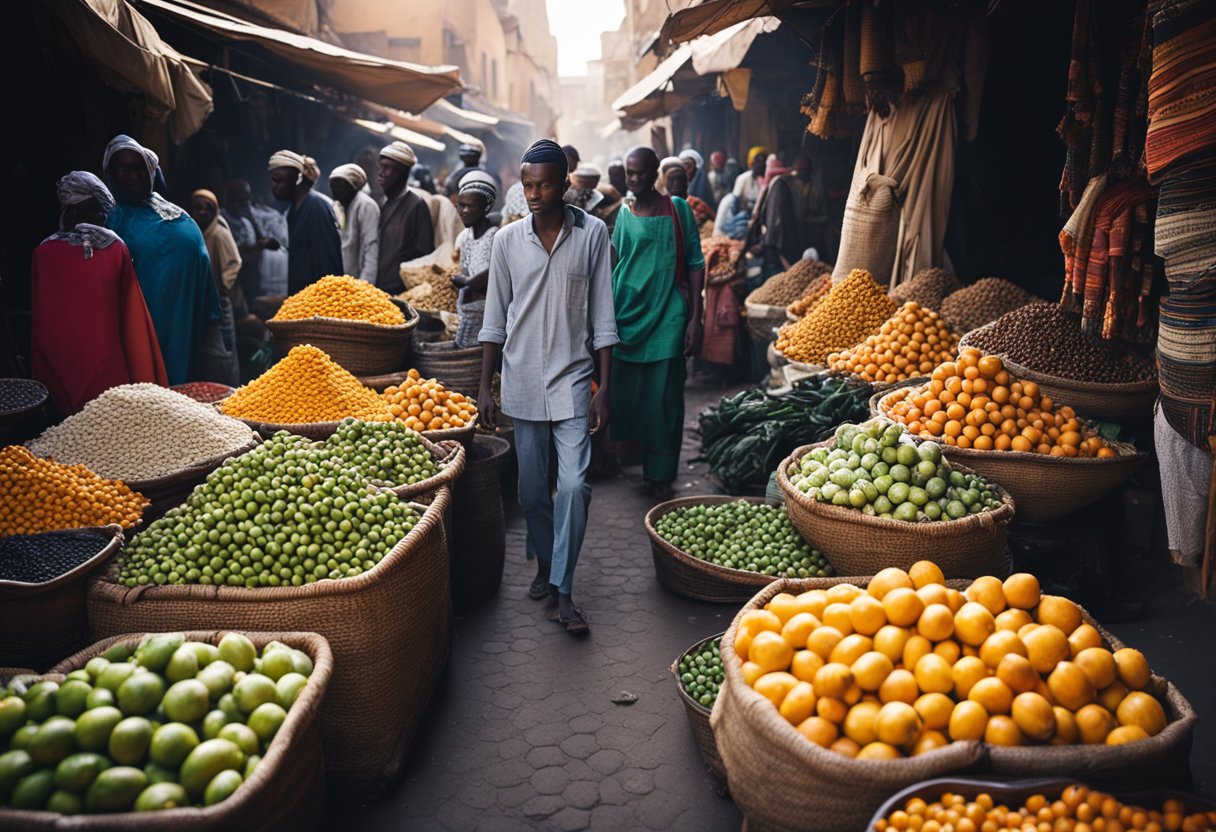
In this section, we explore the varied African landscapes and pinpoint the key market locations central to the continent’s diverse cultures.
Diversity of African Landscapes
Africa’s terrain is remarkably varied, encompassing vast deserts, such as the Sahara, dense rainforests like the Congo Basin, and majestic mountain ranges, including the Atlas Mountains. The continent’s geography creates a mosaic of ecosystems that support a rich tapestry of cultures and traditions. The markets of Africa are as diverse as their landscapes, often reflecting the unique environment in which they are situated.
Key Market Locations
Two iconic market locations encapsulate the spirit of African commerce: Marrakech and the Maasai Mara. Marrakech, often referred to as the Red City, is located at the foothills of the Atlas Mountains and is renowned for its bustling medina and vibrant souks. On the other hand, the Maasai Mara, situated in Kenya, is not just a wildlife haven but also a region where the Maasai people’s traditional markets serve as a central hub for cultural exchange. These markets showcase local craftsmanship and serve as a locus for communal interaction.
The Lure of Marrakech
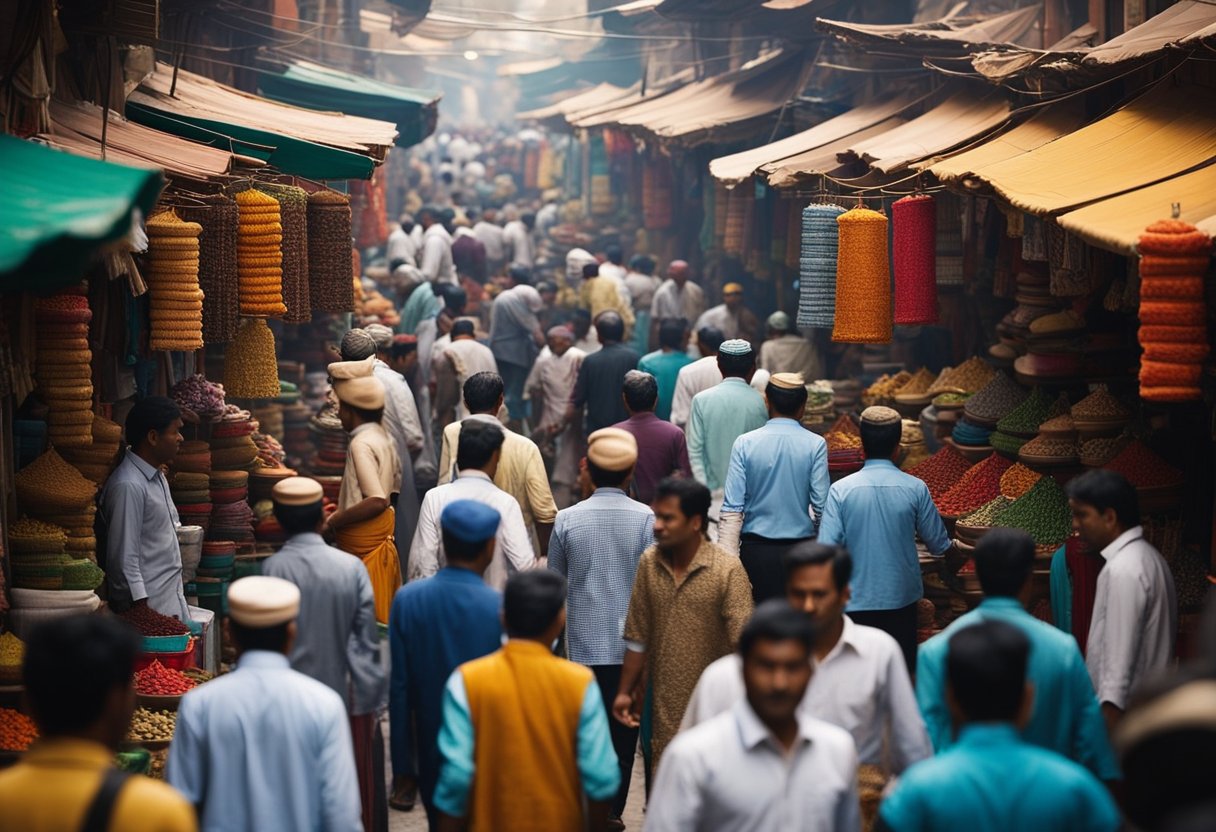
Marrakech is a vibrant city that lures visitors with its rich tapestry of culture, tradition, and bustling tourism scene. The traditional markets, or souks, are at the heart of this magnetic appeal, offering a unique insight into the city’s living heritage.
Marrakech’s Vibrant Souks
At the core of Marrakech’s appeal is the pulse of its marketplaces. These souks are a kaleidoscope of colour and commerce, offering everything from delicate spices to handcrafted jewellery. Culture and commerce intertwine seamlessly within the labyrinthine alleys, where the air buzzes with the sound of haggling and the scent of leather mingles with the aroma of fresh mint.
Exploring these souks presents a multitude of visual delights. The Souk Semmarine is a haven for those seeking textiles like high-quality kaftans and pashmina shawls, alongside exquisite antique furniture and jewellery. These items reflect the craftsmanship of local artisans and the city’s history as a trading hub.
The experience of the souks is also a quintessential part of Marrakech’s tourism, drawing travellers in search of authenticity and a taste of Moroccan life. For those who prefer a more sanitised experience, the Souk Cherifia offers a curated selection of shops within a more navigable space, though with the understanding that higher prices indicate the quality on offer.
Our cultural journey becomes complete with each interaction in these marketplaces, where the exchange transcends the mere transaction, becoming a story of Marrakech’s tradition and the warmth of its people. Tourists connect with the Moroccan culture through the bustle of these souks, etching memories that beckon them back to this enchanting city.
Maasai Mara’s Natural Splendour
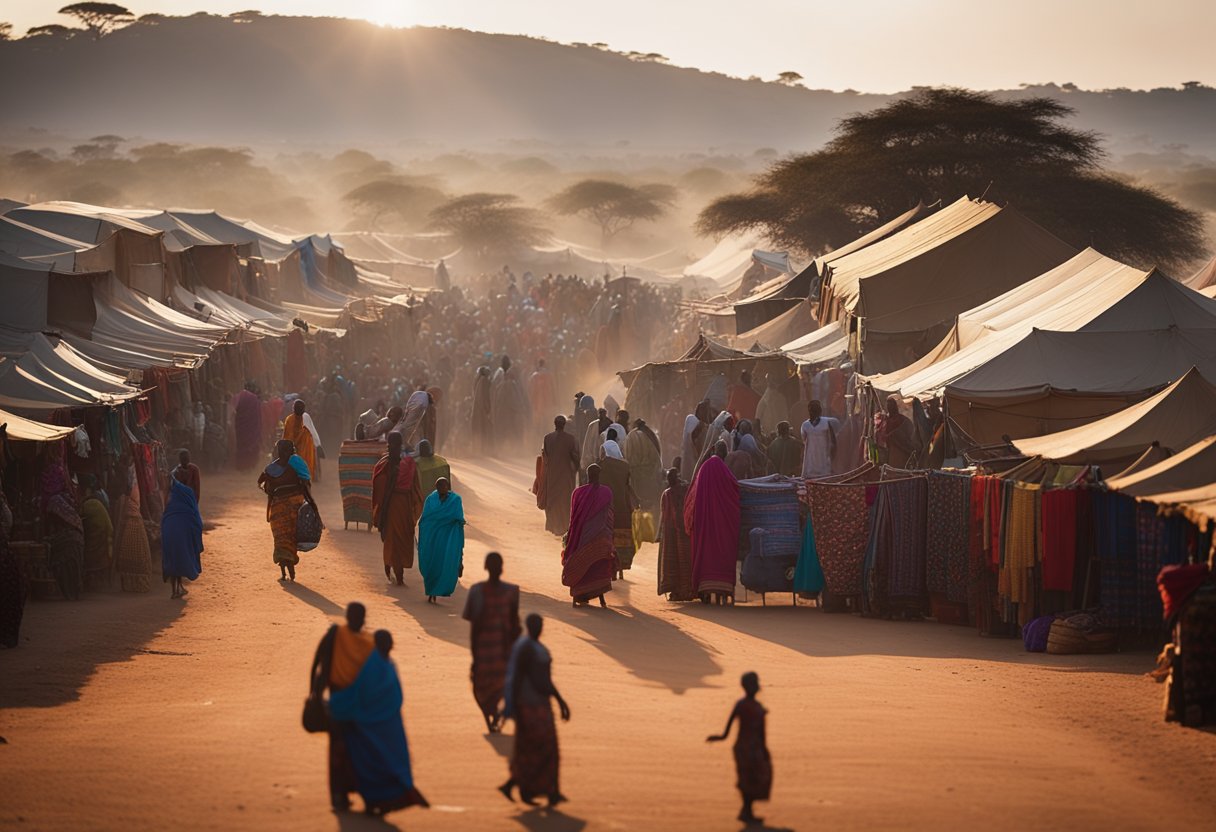
In this section, we explore the breathtaking natural beauty of the Maasai Mara, highlighting the rich tapestry of life that thrives within its grasslands.
Flora and Fauna of the Savanna
The Maasai Mara is a mosaic of rolling grasslands, dotted with acacia trees, creating a quintessential African savanna landscape that supports a stunning variety of wildlife. Here, you can witness the spectacle of the annual wildebeest migration, a jaw-dropping event where over a million animals traverse the plains in a race for survival. This area is a sanctuary for the Big Five – lions, leopards, elephants, buffalo, and rhinoceros – and numerous other species such as zebras, giraffes, and hyenas, all coexisting in this dynamic ecosystem.
The savanna’s flora is uniquely adapted to the arid climate, with grasses and trees like the iconic flat-topped acacia thriving in this biome. The ecosystem supports the diverse animal populations that make Maasai Mara one of the premier wildlife destinations in the world.
The Maasai People and Their Homeland
The Maasai Mara is celebrated for its wildlife and as the homeland of the Maasai people. These semi-nomadic pastoralists are synonymous with Kenyan culture and are known for their distinctive customs, dress, and symbiotic relationship with the land. Living alongside the wildlife, the Maasai maintain their heritage and traditional way of life, often seen herding their cattle across the same grasslands where wild animals roam freely.
Their settlements are an integral part of the Mara’s landscape, with manyatta – circular homesteads of mud and thatch – defining their architectural style. Our understanding of conservation is enriched by observing the Maasai’s respect for nature and their efforts to preserve their ancestral lands.
Annual Wildlife Migration
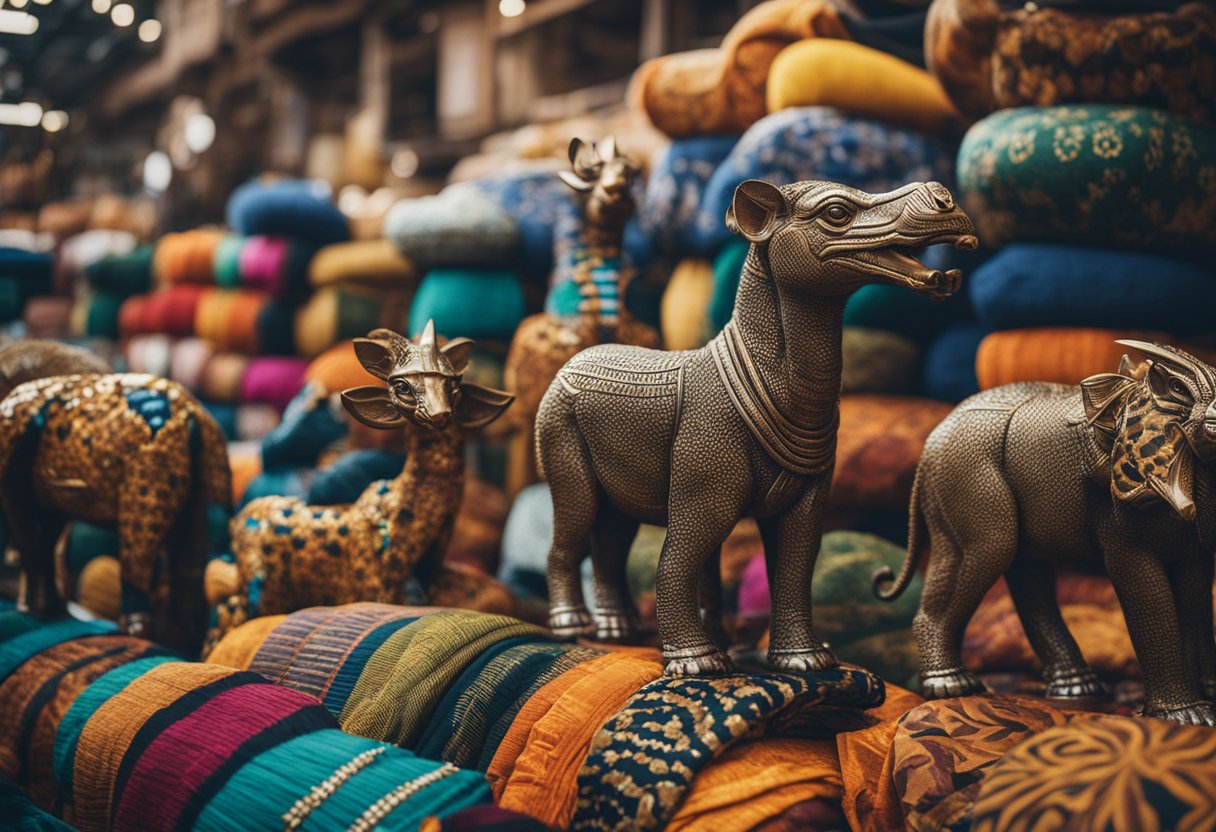
This section explores the epic journey of survival and endurance in Africa’s plains. Known as the Great Migration, this annual phenomenon involves many wildebeest and zebra travelling across Tanzania and Kenya, braving predators and the treacherous Mara River.
The Great Migration Defined
The Great Migration is a spectacular natural event where over a million wildebeest, accompanied by hundreds of thousands of zebra and other herbivores, traverse the Serengeti in Tanzania to the Maasai Mara in Kenya. The migration follows a circular route, dictated by the rains and the search for fresh grazing lands. Wildebeest, the protagonists of this journey, face numerous challenges, from natural barriers like the Mara River, where crocodiles await their chance, to the exhaustion and potential starvation that is part of their relentless trek.
- Main Participants:
- Wildebeest: Over 1 million.
- Zebra: Thousands join the movement for rich pastures.
- Key Locations:
- Serengeti: The starting point in Tanzania.
- Mara River: A significant hurdle on the border between Tanzania and Kenya.
- Maasai Mara: The destination in Kenya, where lush grazing awaits.
Predators and the Food Chain
As the herds move, they are closely followed by various predators. These predators, which include lions, hyenas, and cheetahs, rely heavily on migrating animals for food. The migration offers a seasonal feast that is critical for their survival. Predatory behaviour peaks around obstacles in the journey, especially at the Mara River, where vulnerable animals are easier to target.
- Predators’ Role:
- Control Population: Predators naturally help manage the wildebeest numbers.
- Balance Ecosystem: They play a pivotal role through predation in the Serengeti-Maasai Mara ecosystem.
The annual migration is not just a movement; it’s an essential cycle that impacts the entire region’s dynamics, from the Serengeti grasslands to the Mara River crocodiles, playing a crucial role in maintaining a balanced ecosystem.
Wildlife Conservation Efforts
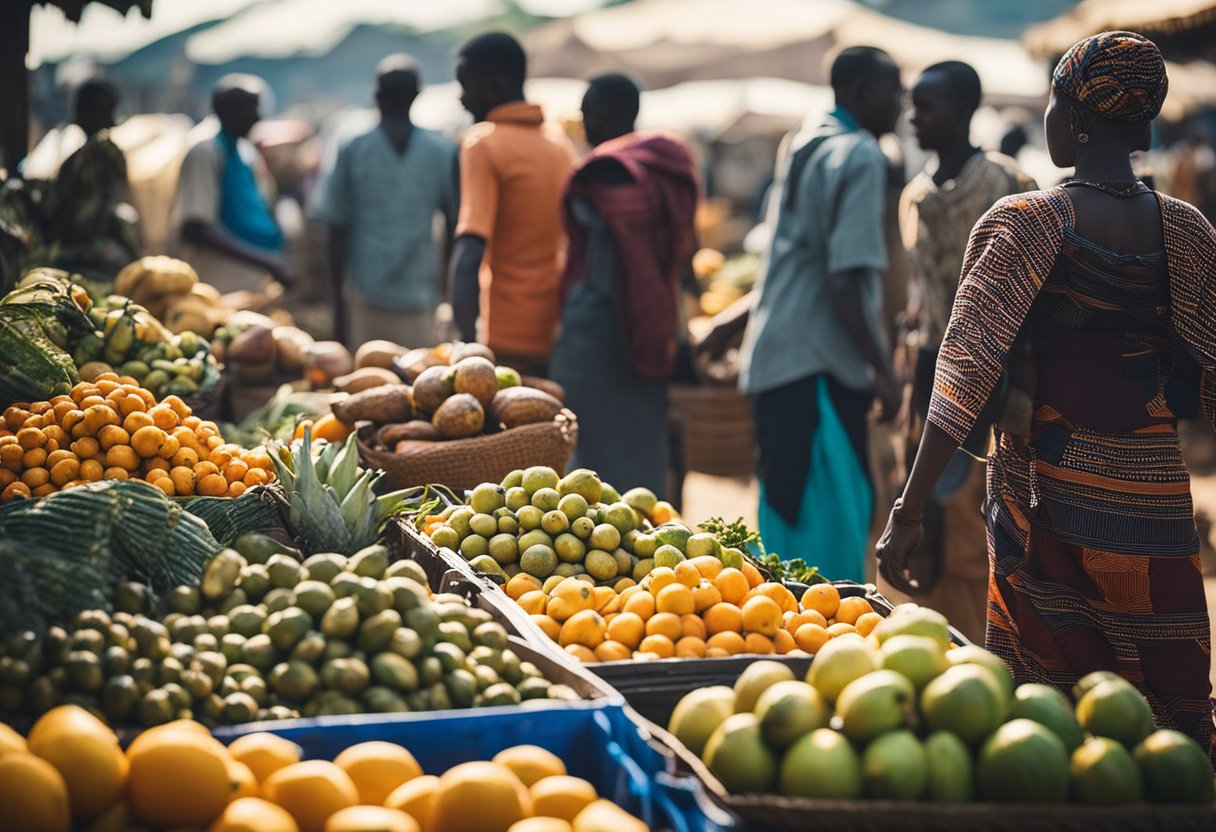
In this section, we will explore the significant strides made in wildlife conservation within Africa’s traditional markets, focusing on the efforts within the Maasai Mara National Reserve.
Challenges and Successes
The path to effective conservation is filled with both obstacles and achievements. One of the most prominent success stories in the Maasai Mara involves the protection of flagship species such as elephants, rhinos, and cheetahs. The region faces ongoing challenges like habitat loss and poaching, yet local and international support has made successful interventions possible.
For instance, the Maasai Mara Wildlife Conservancies Association has galvanised community-led conservation efforts that benefit wildlife and local livelihoods. In these efforts, key start-up support was provided by organisations such as The Nature Conservancy, which helped develop a comprehensive conservation action plan.
Community-Based Conservation
Incorporating community-based conservation initiatives has proven pivotal within the Maasai Mara ecosystem. The Maasai people have long been guardians of the land, existing symbiotically with the wildlife. By involving them directly in conservation activities—from anti-poaching patrols to managing tourism—the incentives for preserving their natural heritage are aligned with economic benefits.
Entities like the Maasai Mara National Reserve have evolved to work hand in hand with local communities, fostering a sense of ownership and responsibility towards conservation. This collaborative approach has positively impacted wildlife numbers and fostered sustainable practices that ensure the long-term health of these critical ecosystems.
Experience of a Safari
Embarking on a safari offers a unique glimpse into the untamed beauty of Africa’s wilderness, from the bustling markets of Marrakech to the open savannahs of the Masai Mara. This journey connects us with the continent’s heart through its diverse wildlife and cultural richness.
Choosing a Safari Tour
Our choice of safari tour can deeply impact our experience amidst Africa’s breathtaking landscapes. To ensure a fulfilling journey, we consider various tours ranging from budget-friendly group excursions to more exclusive, customised experiences. Choosing a reputable operator who prioritises safety and has knowledgeable guides who are well-versed in local ecosystems is critical. For an authentic experience, the Masai Mara offers unparalleled opportunities. The national reserve is teeming with wildlife, including the iconic Big Five: lions, elephants, buffaloes, leopards, and rhinoceroses.
Wildlife Watching Ethics
Ethical wildlife watching is paramount as we immerse ourselves in the thrill of observing Africa’s majestic animals. We are committed to respecting the animals’ natural behaviours by maintaining a safe distance and minimising noise. Our guides ensure we do not intervene in natural events like predator-prey interactions. Emphasising conservation, we select safaris that operate with minimal environmental impact and contribute to preserving the game reserves and their inhabitants.
Accommodations and Amenities

In the traditional markets of Africa, particularly from Marrakech to Masai Mara, travellers find a spectrum of accommodations and amenities that cater to various preferences and expectations. We delve into the plush comfort of safari lodges and the intimate connection with nature offered at camps and conservancies.
Staying in Safari Lodges
Safari lodges in the Masai Mara National Reserve offer travellers luxurious accommodations and stunning savannah views. The Mara Serena Safari Lodge is one example where guests are treated to top-notch service amidst a gently rolling, acacia-specked landscape. The experience is complemented by fine dining and modern amenities, ensuring a comfortable stay in the heart of the African bush.
Camps and Conservancies
Conversely, staying at a camp or conservancy allows guests a closer nature experience while still providing a high level of service. Camps like Kichwa Tembo Tented Camp provide up-close access to wildlife and the natural environment. Additionally, the Mara North Conservancy adjacent to the Masai Mara is a noteworthy region where travellers can find accommodation at places like Acacia and Mara House, blending the allure of isolation with an exclusive safari experience.
Cultural Insights and Interactions
Exploring the traditional markets of Africa offers us deep insights into the diverse cultures and traditions that make each market uniquely vibrant. Here, we will focus on visiting Maasai villages and discovering the arts and crafts that are memorable souvenirs of this rich cultural exchange.
Visiting Maasai Villages
When we wander through the Maasai villages sprawled along the Great Rift Valley, we’re not just tourists; we witness a way of life that has stood the test of time. The Maasai people maintain a pastoralist lifestyle, deeply intertwined with their cattle herds. Venturing into these villages allows us to observe the cultural sustainability of their communal practices and the environmental management that shapes their everyday lives.
The Maasai have managed to preserve their culture through generations, and it is through tourism that they have provided an intimate glimpse into their contest between tradition and modern pressures. We notice the importance of cattle as we witness Maasai traditions first-hand and learn how these practices are rationally based on sound, environmentally conscious choices.
Arts and Crafts as Souvenirs
African markets are treasure troves, teeming with many arts and crafts that are not merely souvenirs but tangible expressions of cultural identity. These items embody local traditions, from intricate beadwork that tells a story to hand-woven baskets that hold the essence of skill passed down through generations.
In the bustling marketplaces, we find ourselves amidst artisans whose crafts reflect a deep-rooted connection to their culture. These items serve as a bridge between us and the history of the land, offering a piece of heritage that supports local communities. We understand that these artefacts are more than simple goods; they are the product of age-old traditions that continue to thrive in contemporary markets.
Travel Practicalities
When planning a visit to the traditional markets of Africa, such as those bustling hubs in Marrakech and the vibrant locales around Masai Mara, it’s essential to remember the intricacies of travel. We’ll guide you through the best times to visit and provide vital health and safety tips to ensure a fulfilling and secure experience.
Best Times to Visit
Weather plays a significant role in the planning of any trip. For the most pleasant conditions, especially if you’re venturing to open-air markets like those in Masai Mara, consider visiting between July and November. During this period, you’ll enjoy the dry season, making it not only excellent for wildlife sightings but also comfortable for market exploration.
Masai Mara:
- July – October: Peak safari season with modest rainfall.
- November: Short rains begin, fewer tourists and market visits are still agreeable.
Marrakech:
- July: Quite hot; early morning or evening market visits recommended.
- November: Cooler temperatures, comfortable market ambience.
In Nairobi, a city often used as a gateway to the Masai Mara, the climate is generally more temperate, but it follows a similar rainfall pattern to the Mara. It’s prudent to consider this when planning your travels and market visits in the region.
Health and Safety Tips
While exploring the vibrant markets of Africa, your health and safety should be a top priority. Here are some tips to assist you on your journey:
- Vaccinations: Ensure all required vaccinations, including Yellow Fever, are up to date.
- Hygiene: Carry hand sanitiser and use it frequently, especially after handling money or goods.
- Water: Always drink bottled or purified water to avoid waterborne diseases.
- Sun Protection: Wear a hat and UV-protection sunglasses and use sunscreen liberally.
- Security: Use money belts or hidden pouches to protect your belongings.
FAQs
When exploring traditional markets in Africa, such as those in Marrakech and Maasai Mara, it’s vital to enter with insight. We answer common questions to help you appreciate and navigate these vibrant cultural hubs.
What are the main products sold at the Maasai Market?
At the Maasai Market, one can find an array of handcrafted items, including beaded jewellery, colourful fabrics, traditional Maasai blankets known as ‘Shukas’, carved wooden sculptures, and intricate homeware. These products reflect the distinctive artistry of the Maasai culture.
How can one identify authentic items at African traditional markets?
To ensure authenticity, closely inspect the materials and craftsmanship. For example, genuine handwoven baskets and traditional carvings display unique patterns and qualities distinct to local artisans. Engage with sellers to learn about the origins and making of the items, as they’re usually proud to share the heritage behind their goods.
What is the significance of markets such as Marrakech in the cultural landscape of Africa?
Markets in Marrakech are more than just shopping destinations; they are vital cultural centres that showcase the region’s rich history, craftsmanship, and social interactions. They serve as a living museum where one can immerse in the traditional Moroccan way of life.
How does one navigate the varied market days and locations of Maasai Market in Nairobi?
The Maasai Market’s location rotates daily across different venues in Nairobi. We advise researching ahead for the updated schedule or asking local guides for the current day’s location. This way, you can craft your itinerary to align with the vibrant market days.
What are some tips for bargaining at markets like the Maasai and the ones in Marrakech?
Go into bargaining with a respectful and friendly demeanour. Start by offering a lower price than you’re willing to pay, but stay reasonable. It’s customary to go back and forth until both parties agree upon a fair price. Walking away can also prompt the seller to offer the item at a better price.
What cultural experiences can visitors expect when attending traditional African markets?
Visitors to markets like those in Marrakech or the Maasai Market will be enveloped in a sensory experience filled with the bustle of trade, a kaleidoscope of colours, and the fragrance of spices and local delicacies. It’s a chance to partake in the local culture by observing rituals of barter, savouring street foods, and interacting with local craftsmen and vendors.






